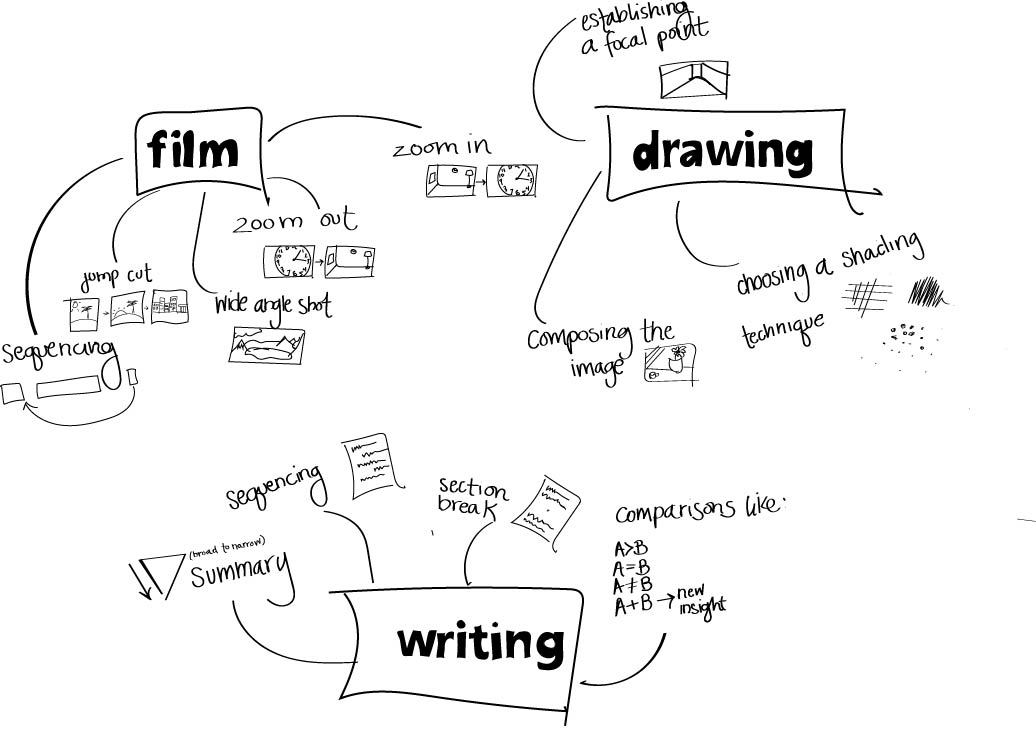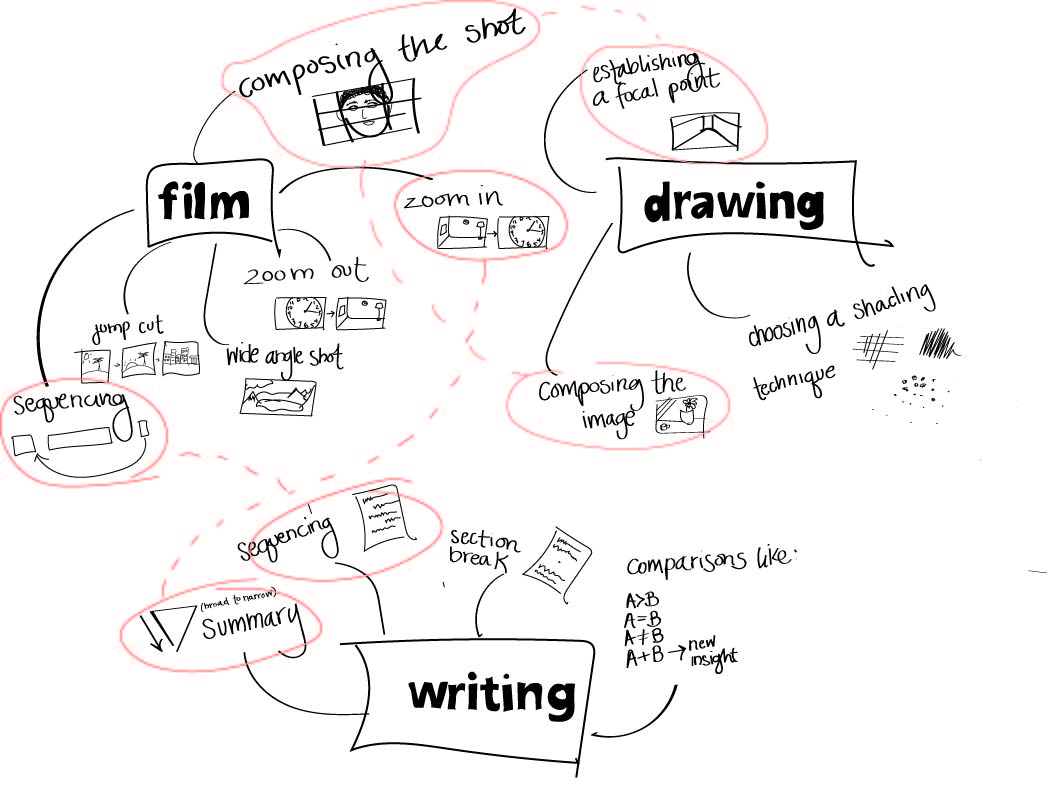Grammars and Modes
By Moira McCavana
Each mode has a grammar or a catalog of “moves” that can be performed within that mode. Think of a “move” as a micro decision regarding how to present a unit of knowledge.
- A“move” in film might be sequencing, a wide-angle shot, a jump cut, a zoom in, zoom out, framing a shot etc.
- A “move” in written text might be sequencing, a section break, comparisons like A<B; A=B, A ≠B or A+B → some new insight, a broad to narrow summary, etc
- A “move” in drawing might be composing your image, establishing a focal point, determining negative space, choosing a shading technique, choosing a color palette, etc

Different modes often have some moves that are analogous to moves in other modes.
- As above, sequencing might be a move shared by both film and written text, as each is a mode that builds a temporal narrative. Sequencing, however, is not a move shared by drawing, as the contents of a drawing are not dispersed temporally, but rather, are simultaneously made available to the viewer.
- Drawing does share several moves with film, such as composing a frame.

Some modes might have analogous moves in other modes, but simply function as a “better” vessel for certain ideas (another way of thinking about this is to say that each mode has its own particular affordances ).
- When it comes to a basic comparison between two images, drawing will work just fine, but when it comes to articulating a slightly more nuanced comparison, again, like A<B; A=B, A≠B, or A+B → some new insight, a language-based mode like written text, narrated film, or podcasting might be a “better” vessel for that content
- A basic example: when it comes to analyzing still or moving images, a visual mode is probably more effective than written text
Fluency in one or multiple grammars is relevant to various actors within the universe of multimodal scholarship and pedagogy.
- Students and scholars: in order to identify what mode best suits their scholarship, students and scholars need to have a rough understanding of what kinds of moves you can make in each so that you can choose the mode best suited to your argument
- Advisors/peer reviewers: as the academy becomes more hospitable to work produced in nontraditional modes, those responsible for assessing the quality of that work must have a basic understanding of the particular affordances of each mode in order to evaluate how they’re being utilized by the scholar to make or reveal meaning.
- Teachers: as students develop literacy in various modes beyond written language, understanding the grammar of each mode allows teachers to leverage students’ own fluencies to develop their critical thinking and communication skills.